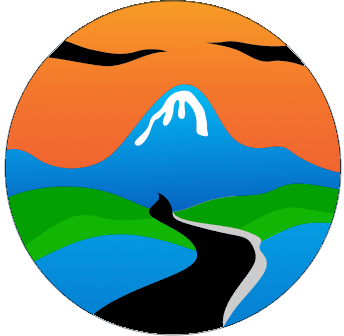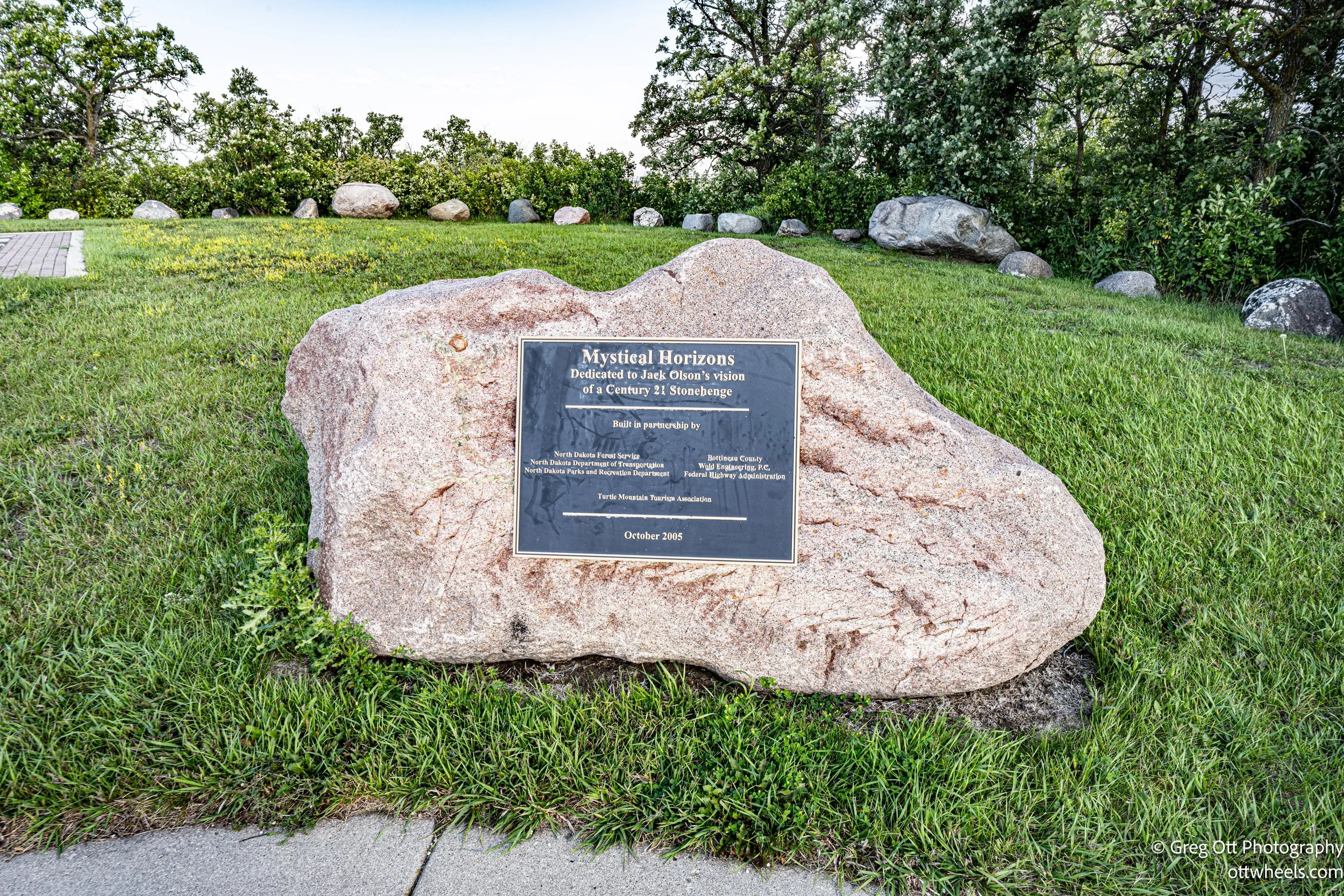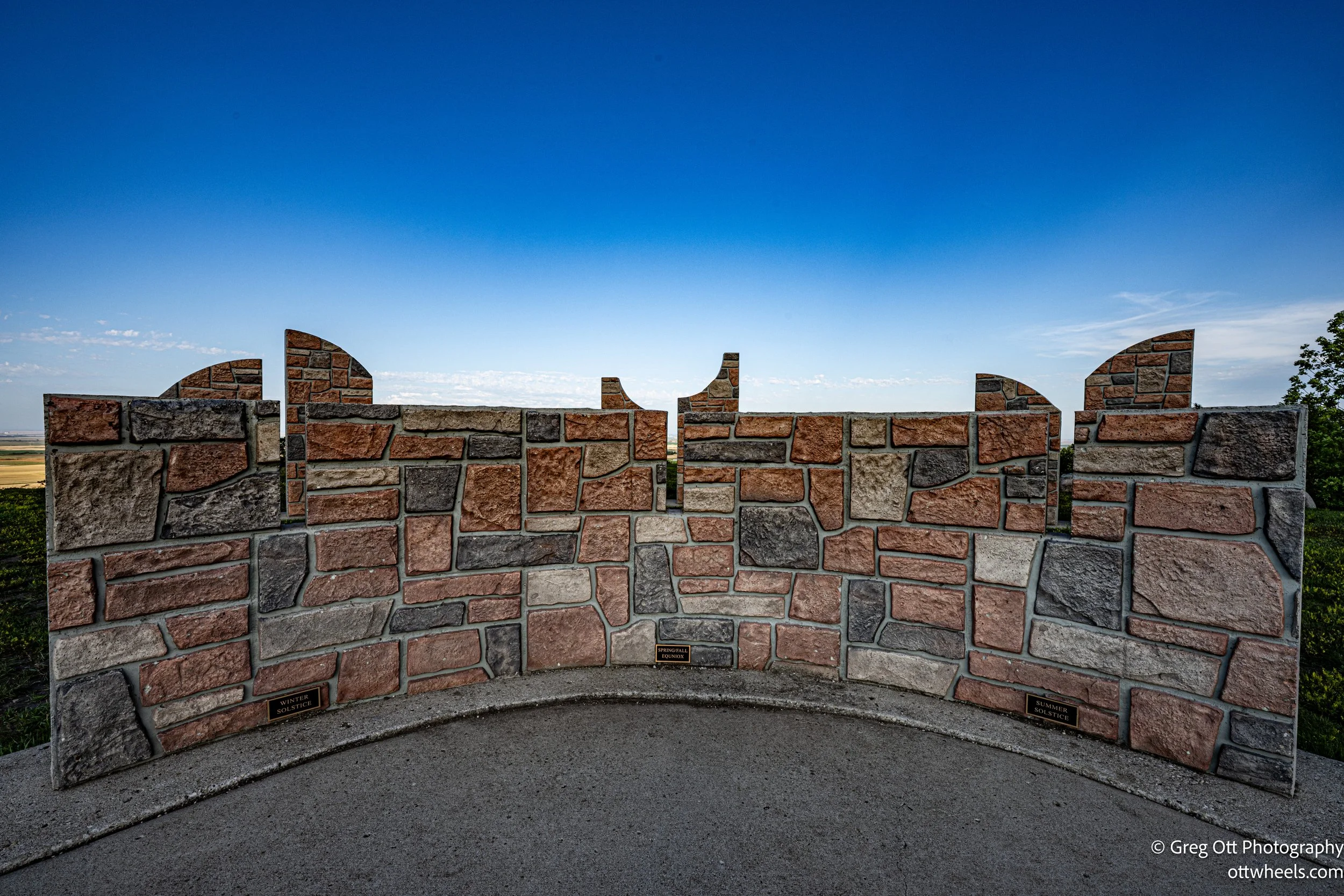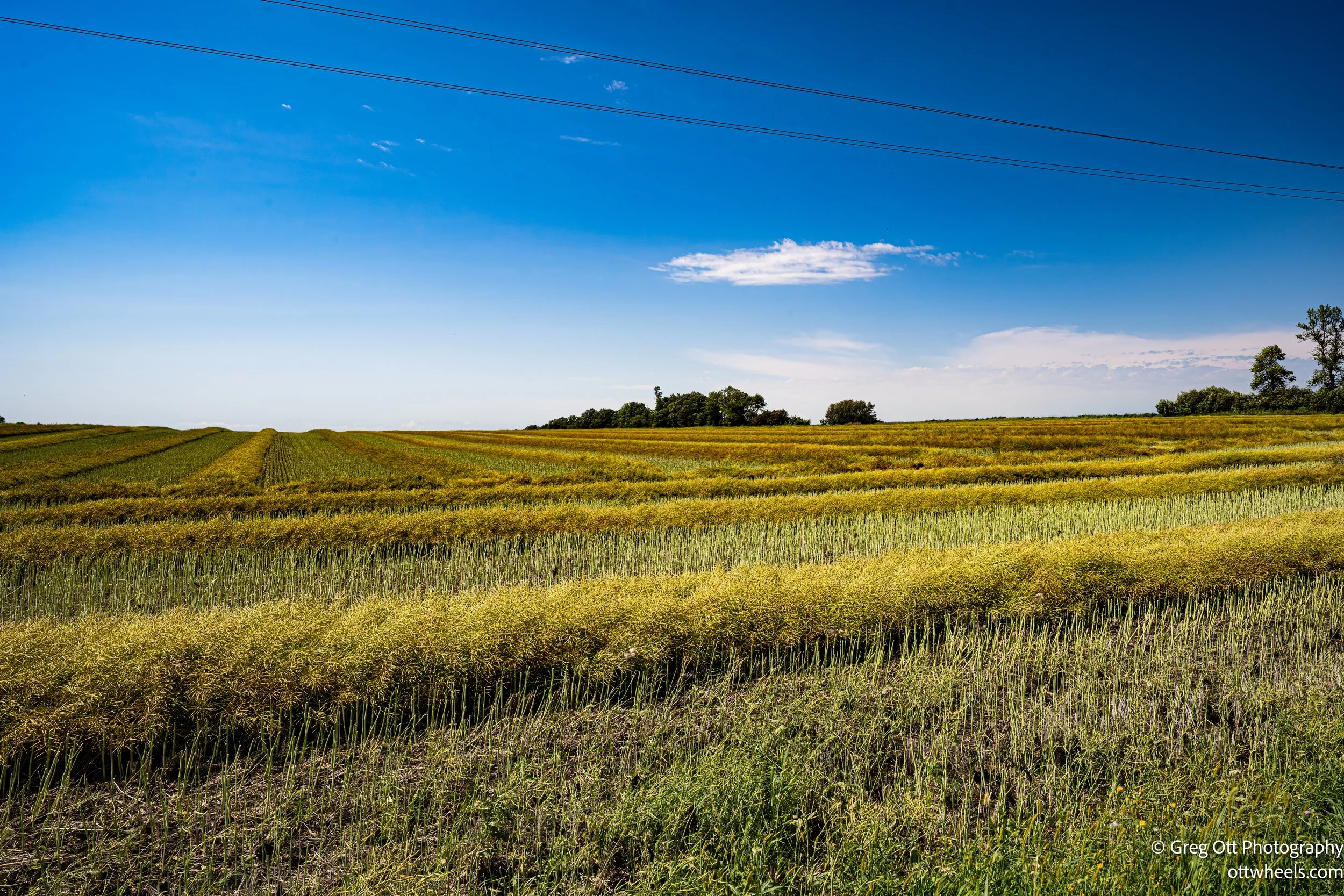Lake Metigoshe Park
Mystical Horizons
Mystical Horizons truly lives up to its nickname—“North Dakota’s Stonehenge.” Conceived by Bottineau-born aerospace engineer Jack Olson, the site was brought to life after his passing, opening on October 21, 2005. The design—a sleek blend of astronomy and art—features six slotted walls that cast precise beams of sunlight during the solstices and equinoxes, a human-sized sundial, and a sighting tube aligned with Polaris. The sweeping Turtle Mountains vista only adds to the sense that you're stepping into something larger than yourself.
I spent the night here hoping for Milky Way shots. The forecast promised clear skies after midnight, so I waited until 2 a.m.—only to find the clouds deepening, not clearing. And to top it off, a giant spotlight lit the entire area. No Milky Way that night, but the setting was still memorable in its own way. This was the perfect overnight boondocking spot.
The morning views were wide open and calming, the kind where a clear sky makes it feel like you can see forever. I wandered around with my camera, taking in the quiet, when a large hawk came gliding straight toward me. Just before reaching me, it climbed and circled overhead again and again. I held my breath, ready for that perfect shot, but each pass was a blur. It made me think about those incredible photos of eagles snatching salmon from rivers—every feather sharp, every drop of water frozen—and wonder how they do it. My hawk wasn’t giving up any cover shots today; instead, it drifted off over the mountains, still searching for its breakfast.
Jack Olson
John “Jack” Olson grew up on a farm near Bottineau, born in 1922, and went on to live a life that seemed straight out of an adventure book. During WWII he earned his pilot wings in the Army Air Forces and became known for an incredible feat—landing a B-24 bomber that had lost half a wing in a midair collision, bringing the whole crew home safely. After the war he chased both art and science, studying design at the Minneapolis School of Art and earning a degree in aeronautical science from Central Washington University. That mix of creativity and engineering carried him into a career at Brown & Bigelow, where he racked up more than 120 patents, including one oddball invention that turned into a hit at Tupperware parties: the “pickle plucker.”
In 1958 Olson moved to Boeing Aerospace and spent the next few decades working on everything from futuristic Jetfoils to a mass-transit system in West Virginia. Some of his ideas mirrored the Hubble Space Telescope and Apollo lunar lander pads, and he even sketched out a solar-power satellite that could grow food for a million people. But Olson wasn’t just an engineer—he was also an artist, glider pilot, and photographer, earning high honors in each. Twenty-one of his space paintings now sit in the Smithsonian’s collection. Looking at Mystical Horizons today, you can see how all those threads—imagination, engineering, and a deep sense of wonder—came together in one place.
Forced into medical retirement in 1984, Olson continued consulting for Boeing and NASA. In retirement, he lived in Bottineau and worked on community-focused projects—our modern Stonehenge among them. He also wrote and published a collection of Turtle Mountain stories, Once in the Middle of Nowhere. He died August 28, 2001, in Normandy Park, Washington.
Bottineau
After Mystical Horizons, I drove toward the small town of Bottineau to restock. Google Maps' grocery suggestions weren't exactly glamorous—liquor store, gas stations, a Dollar Store—then it offered me a Kroger, 187 miles away. Thankfully, there was a Walmart Grocery just 20 miles off, and I was already headed that way.
Tommy the Turtle
Once resupplied and fueled, I made the obligatory stop at Tommy the Turtle. This giant turtle sitting astride a snowmobile may be the world’s largest turtle roadside attraction—and people flock here for proposals and photos. Me? I grabbed a pic, gave Tommy a polite nod, and rolled on. Quirky? Definitely.
Lake Metigoshe Park
Next stop was Lake Metigoshe State Park. I pulled over a few times on the way in for photos of fields and barns before rolling up to the campground entrance. The woman at the booth promised me a modern, level site with clear skies for my Starlink. I asked her to pick one based on that, since I’d never been here before. What I ended up with was the complete opposite—sloped, tree-covered, and just barely long enough for the van. When I asked to switch, she cheerfully added, “Sure, it’ll be five bucks.” That was a new one, but I paid up and moved along.
Once parked, I figured I’d give the trails a shot. She’d circled a few on the map for me, but it didn’t take long to realize they weren’t exactly bike-friendly. Grass, ruts, and passages so tight I had to hop off and push. I still got about six miles in, though it felt more like an obstacle course than a ride. The real surprise of the park turned out to be the showers: spotless tile floors, roomy stalls, plenty of hooks, and a showerhead that actually worked the way it should. Probably the nicest I’ve seen at any campground. I finished the evening with a call to the local kayak shop, but since they don’t deliver and I can’t wedge one into the van without wrecking the interior, that idea went back on the shelf.












